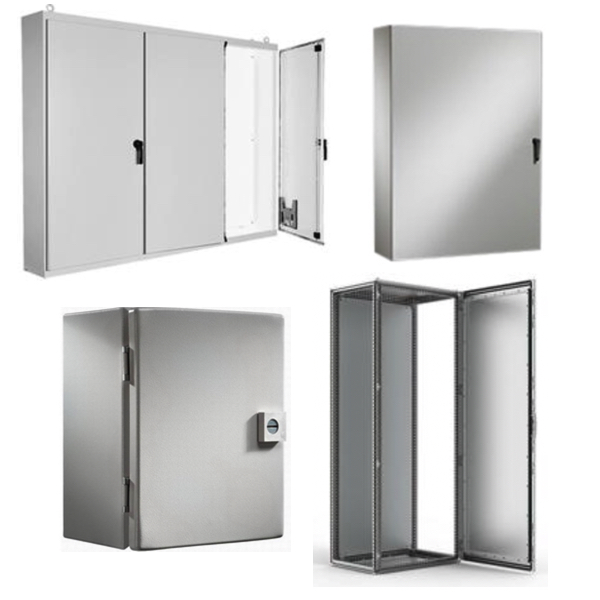Steel Enclosures & Junction Boxes

Steel enclosures and junction boxes from RSP Supply provide durable and reliable protection for electrical and electronic components in industrial and commercial environments. Engineered for strength, versatility, and long-term performance, these enclosures are a trusted choice for control panels, automation systems, and power distribution applications.
With options from nVent Hoffman, Rittal, and Schneider Electric, RSP Supply offers both wall-mount and floor-standing steel enclosures, available in various NEMA and IP ratings to meet the highest safety and performance standards.
FAQs
Q: What are the benefits of using steel enclosures?
Steel enclosures are strong, affordable, and durable, providing excellent protection from impact, vibration, and physical damage in industrial environments.
Q: How do galvanized steel enclosures resist corrosion?
They feature a zinc-coated finish that protects the enclosure from rust and oxidation, making them ideal for outdoor and high-humidity environments.
Q: Are steel enclosures suitable for outdoor use?
Yes. Galvanized or powder-coated steel enclosures with proper sealing are excellent for outdoor use, protecting against water and debris ingress.
Q: What’s the difference between steel and stainless steel enclosures?
Steel enclosures are more cost-effective and ideal for stable indoor environments, while stainless steel enclosures offer superior corrosion resistance for harsh or sanitary conditions.
Q: Which brands of steel enclosures does RSP Supply offer?
RSP Supply carries steel enclosures from nVent Hoffman, Rittal, and Schneider Electric, known for quality, reliability, and compliance with global standards.
Why Buy from RSP Supply
At RSP Supply, we stock a wide range of steel enclosures and junction boxes designed to meet industrial and commercial needs. Our selection includes models from industry-leading brands, backed by expert technical support and fast shipping.
We make it easy to find enclosures that meet your project’s exact specifications, ensuring compliance, durability, and long-term performance. Trust RSP Supply for reliable electrical protection solutions that keep your systems secure and your operations running smoothly.

